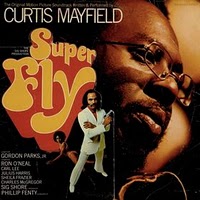 A monument of 70’s soul music that totally eclipsed the film it scores and for good reason as an average film continues to get a lot of attention on the back of this record. While the film seemed to glamorize drug dealing in the black community Curtis told the real and much less appealing truth about his communities struggle against its evils. In doing so he produced a record of real power and one with a bittersweet feel as serious and depressing subject matter is delivered by the delicate almost angelic falsetto. It is up there with the great soul concept LP’s like Marvin Gaye’s “What’s Going On” and Donny Hathaway’s “Extension of a Man” that signaled a major shift in the power of soul and black music in general. –Jon
A monument of 70’s soul music that totally eclipsed the film it scores and for good reason as an average film continues to get a lot of attention on the back of this record. While the film seemed to glamorize drug dealing in the black community Curtis told the real and much less appealing truth about his communities struggle against its evils. In doing so he produced a record of real power and one with a bittersweet feel as serious and depressing subject matter is delivered by the delicate almost angelic falsetto. It is up there with the great soul concept LP’s like Marvin Gaye’s “What’s Going On” and Donny Hathaway’s “Extension of a Man” that signaled a major shift in the power of soul and black music in general. –Jon
Soul, Funk and Disco
Booker T & The MG’s “McLemore Avenue” (1970)
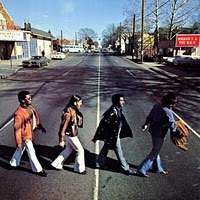 Likely my favorite of the “Abbey Road” concept cover albums, this is a crisp, tight and funky interpretation of all the classics we know and love, with perfect bubbly organ and bright guitar tone. Booker T and the band actually seem to hold back a bit on most of the numbers, arranging nearly all of the “Abbey Road” songs into three medleys, and one version of Harrison’s “Something”, really only breaking out the dirty soul for moments of “The End” and “Come Together”. And being that this was recorded in 1970, they had to test out some of the new technology and record a Moog for the intro of “Here Comes The Sun”. So what makes this any better than the glut of Beatles covers that ran rampant then and now? Well, for one thing, Booker T & the MG’s are one of America’s most famous “backing bands”, and this time, since there’s no vocalist to feature, the songs can really stand on their own. No wankery solos or bombast are needed to create attention, this is a soulful and understated interpretation. Steve Cropper can say more with three notes than most can with thirty, and on songs like those found on “Abbey Road”, he can say what he means effortlessly, and engagingly. There’s a lot of space in between the notes, and when you’re as tight as these guys, you get to hear it and appreciate it all. –Cameron
Likely my favorite of the “Abbey Road” concept cover albums, this is a crisp, tight and funky interpretation of all the classics we know and love, with perfect bubbly organ and bright guitar tone. Booker T and the band actually seem to hold back a bit on most of the numbers, arranging nearly all of the “Abbey Road” songs into three medleys, and one version of Harrison’s “Something”, really only breaking out the dirty soul for moments of “The End” and “Come Together”. And being that this was recorded in 1970, they had to test out some of the new technology and record a Moog for the intro of “Here Comes The Sun”. So what makes this any better than the glut of Beatles covers that ran rampant then and now? Well, for one thing, Booker T & the MG’s are one of America’s most famous “backing bands”, and this time, since there’s no vocalist to feature, the songs can really stand on their own. No wankery solos or bombast are needed to create attention, this is a soulful and understated interpretation. Steve Cropper can say more with three notes than most can with thirty, and on songs like those found on “Abbey Road”, he can say what he means effortlessly, and engagingly. There’s a lot of space in between the notes, and when you’re as tight as these guys, you get to hear it and appreciate it all. –Cameron
Zapp “Zapp” (1980)
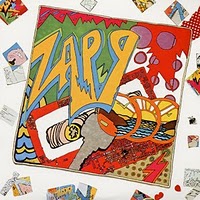 While this artist and LP have a definate P-Funk influence, Roger Troutman is no less a brilliant musician himself. The same way James Brown took the African-American experience (like Hendrix, Sly Stone & others) to a different level, so did Roger & Zapp with “More Bounce To The Ounce.” It was, and is, like nothing ever heard before. Just like Larry Graham’s bass changed the face of R/B and funk, so did “More Bounce.” The whole nine minutes of the song is irresistable. It opened the door for street funk, which gave way to another type of “funk”: Hip-Hop and Rap. This LP is a defining moment in Black music. Not only is Roger a master at the “talk box,” his deep blues committments come shining through. Per groove, Zapp offers the most bounce to the ounce!
While this artist and LP have a definate P-Funk influence, Roger Troutman is no less a brilliant musician himself. The same way James Brown took the African-American experience (like Hendrix, Sly Stone & others) to a different level, so did Roger & Zapp with “More Bounce To The Ounce.” It was, and is, like nothing ever heard before. Just like Larry Graham’s bass changed the face of R/B and funk, so did “More Bounce.” The whole nine minutes of the song is irresistable. It opened the door for street funk, which gave way to another type of “funk”: Hip-Hop and Rap. This LP is a defining moment in Black music. Not only is Roger a master at the “talk box,” his deep blues committments come shining through. Per groove, Zapp offers the most bounce to the ounce!
Sly and the Family Stone “There’s a Riot Goin’ On” (1971)
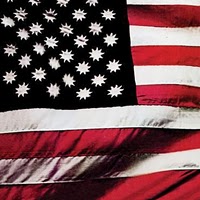 The greatest funk album ever recorded, which puts it way up there for best album, period. It’s done more than any other single pop album to change the way I listen to music, and even two years after first hearing it (yeah, I came to the riot late), I’m in awe of how it works – after all, it really shouldn’t, it’s simply too fucked up. Insular, decadent to the death, angry to exhaustion, with a bass guitar so upfront it’s unlistenable for quite some time, until you realize this is part of the album’s statement of purpose: all the crap that comes out of suburban subwoofers owes a debt to the dank, dirty vibe of the bass on this album. –Will
The greatest funk album ever recorded, which puts it way up there for best album, period. It’s done more than any other single pop album to change the way I listen to music, and even two years after first hearing it (yeah, I came to the riot late), I’m in awe of how it works – after all, it really shouldn’t, it’s simply too fucked up. Insular, decadent to the death, angry to exhaustion, with a bass guitar so upfront it’s unlistenable for quite some time, until you realize this is part of the album’s statement of purpose: all the crap that comes out of suburban subwoofers owes a debt to the dank, dirty vibe of the bass on this album. –Will
Stevie Wonder “Music of My Mind” (1972)
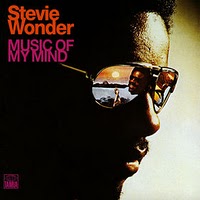 This fully deserves to be held in just as high esteem as the rest of Stevie’s 70’s discography. Totally stunning music and it must have been a total shock to soul lovers ears on release. The music at the time was futuristic in the extreme. Utilizing the synthesizer to full effect to create a unique sound to go along with the supremely catchy and uplifting songs. There is really no weaknesses to this record. If there is any downside it is that Stevie doesn’t seem to realise quite what he has unleashed and so there is a little too much experimentation in places. Is there a better Stevie song than “Superwoman”? If there is I have yet to hear it. Get this and everything up to Songs In The Key of Life and you have some serious soul music to fall back on. –Jon
This fully deserves to be held in just as high esteem as the rest of Stevie’s 70’s discography. Totally stunning music and it must have been a total shock to soul lovers ears on release. The music at the time was futuristic in the extreme. Utilizing the synthesizer to full effect to create a unique sound to go along with the supremely catchy and uplifting songs. There is really no weaknesses to this record. If there is any downside it is that Stevie doesn’t seem to realise quite what he has unleashed and so there is a little too much experimentation in places. Is there a better Stevie song than “Superwoman”? If there is I have yet to hear it. Get this and everything up to Songs In The Key of Life and you have some serious soul music to fall back on. –Jon
Roy Ayers “He’s Coming” (1972)
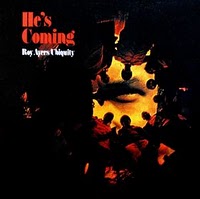 It takes about 20 seconds for you to realise that this is one heavy record. The opening keys and vocals on the reverential opener “He’s a Superstar” just kill it and the music doesn’t let up too much on the rest of the LP. So many great moments from Roy and Harry Whitaker here. I mean “We Live In Brooklyn Baby” is as good as it gets and “Sweet Tears” is one of those Roy Ayers jams designed to get you moving. In the 70’s this pairing had a formula down and worked it to the maximum without ever sounding tired or, amazingly for that matter, repetetive. One of the great songwriting partnerships in music. There are so many great Ubiquity LP’s from this period and you cannot go wrong with any of the classics as they all contain a killer track or two. I would say that this and the less heralded Virgo Red are the pick though. –Jon
It takes about 20 seconds for you to realise that this is one heavy record. The opening keys and vocals on the reverential opener “He’s a Superstar” just kill it and the music doesn’t let up too much on the rest of the LP. So many great moments from Roy and Harry Whitaker here. I mean “We Live In Brooklyn Baby” is as good as it gets and “Sweet Tears” is one of those Roy Ayers jams designed to get you moving. In the 70’s this pairing had a formula down and worked it to the maximum without ever sounding tired or, amazingly for that matter, repetetive. One of the great songwriting partnerships in music. There are so many great Ubiquity LP’s from this period and you cannot go wrong with any of the classics as they all contain a killer track or two. I would say that this and the less heralded Virgo Red are the pick though. –Jon
Terry Callier “What Color Is Love” (1973)
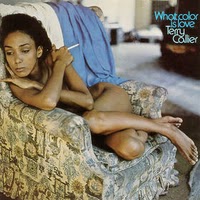 Quite simply one of the greatest records ever made. I cannot believe that it does not get greater attention. It really is the perfect marriage of soul and folk. Callier’s songs are at times joyous and at others surreal and almost sad. They are all delivered in one of the most gentle yet expressive voices there is. Another major part of this album is the production and arrangement of Charles Stepney who was the producer at Chess/Cadet records at the time. He has a wonderful sound that has influenced the likes of 4 Hero heavily in todays age. He is also heard producing the Rotary Connection classics from the same label. –Jon
Quite simply one of the greatest records ever made. I cannot believe that it does not get greater attention. It really is the perfect marriage of soul and folk. Callier’s songs are at times joyous and at others surreal and almost sad. They are all delivered in one of the most gentle yet expressive voices there is. Another major part of this album is the production and arrangement of Charles Stepney who was the producer at Chess/Cadet records at the time. He has a wonderful sound that has influenced the likes of 4 Hero heavily in todays age. He is also heard producing the Rotary Connection classics from the same label. –Jon
The Soul Searchers “Salt of the Earth” (1974)
 The Soul Searchers were a large funk outfit from Washinton DC that were held in high regard in the seventies despite their limited output. This LP is perhaps their best known as it has been plundered heavily by hip hop artists such as Eric B & Rakim, Ice Cube, LL Cool J and Public Enemy. It is this use of the material that makes many of the tracks sound extremely familiar on first listen. The uptempo funkier tracks such as “Blow Your Whistle” and “Ashley’s Roachclip” highlight what a great horn section the band had and are the pick of the cuts. Things slip a little on the ballads which do sound a little dated. The exception is the strangely compelling cover of Bacharach’s “Close to You.” –Jon
The Soul Searchers were a large funk outfit from Washinton DC that were held in high regard in the seventies despite their limited output. This LP is perhaps their best known as it has been plundered heavily by hip hop artists such as Eric B & Rakim, Ice Cube, LL Cool J and Public Enemy. It is this use of the material that makes many of the tracks sound extremely familiar on first listen. The uptempo funkier tracks such as “Blow Your Whistle” and “Ashley’s Roachclip” highlight what a great horn section the band had and are the pick of the cuts. Things slip a little on the ballads which do sound a little dated. The exception is the strangely compelling cover of Bacharach’s “Close to You.” –Jon


